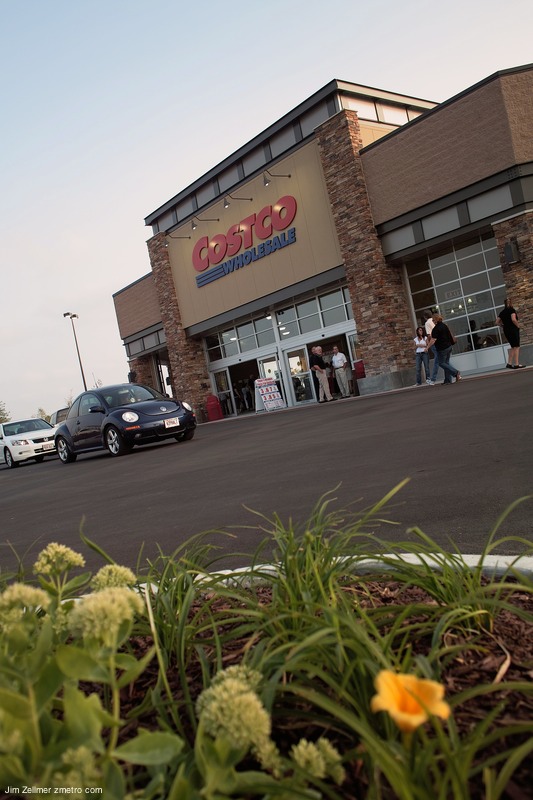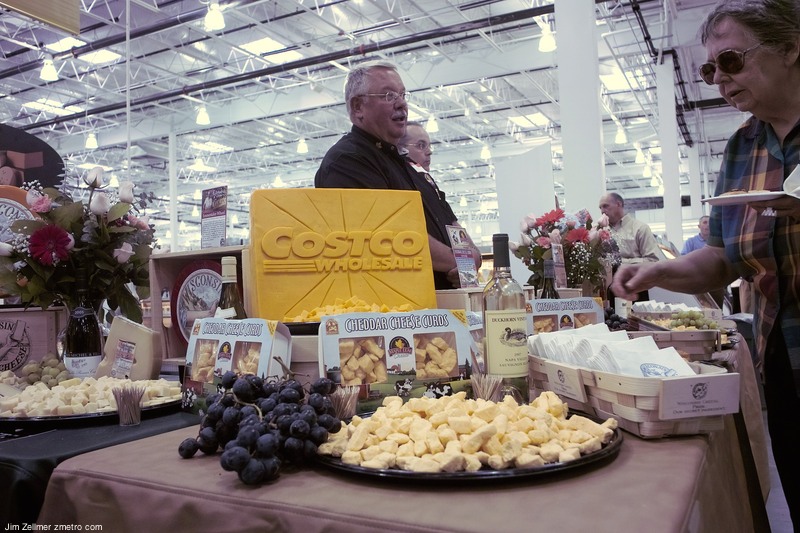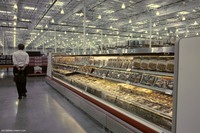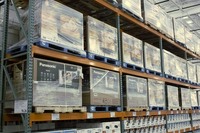Here’s our theory: Daily deadlines did in the newspaper industry. The pressure of getting to press, the long-practiced art of doom-and-gloom headline writing, the flinchiness of easily spooked editors all made it impossible for ink-stained wretches to look farther into the future than the next edition. Speaking of doom and gloom: Online ad revenues at several major newspaper chains actually dropped last quarter. The surprise there is that they ever managed to rise. The newspaper industry has a devastating history of letting the future of media slip from its grasp. Where to start? Perhaps 1995, when several newspaper chains put $9 million into a consortium called New Century Network. “The granddaddy of _______,” as one suitably crotchety industry veteran tells us, folded in 1998. Or you can go further back, to ’80s adventures in videotext. But each tale ends the same way: A promising start, shuttered amid fear, uncertainty, and doubt.
Dangerously in Debt
Former U.S. Comptroller General David Walker speaks out on the perils of the rising federal deficit in the new film “I.O.U.S.A.
If “An Inconvenient Truth” sounded the alarm on global warming, “I.O.U.S.A.,” a new documentary opening in theaters Friday, hopes to do the same for the rising federal deficit.
Backed by Blackstone Group Chairman Peter Peterson, “I.O.U.S.A.” follows former U.S. Comptroller General David Walker and the Concord Coalition’s Robert Bixby on a “fiscal wake-up tour” across America. In the movie, which is co-written by “Empire of Debt” co-author Addison Wiggin and directed by “Wordplay” filmmaker Patrick Creadon, Messrs. Walker and Bixby argue that unless the government alters its policies and spending habits, the U.S. will be in for a serious financial meltdown.
The Diver’s View
A beautiful vr scene from the diving platform in Beijing, host of the 2008 Olympic Games.
Confessions of a Risk Manager
Why did banks become so overexposed in the run-up to the credit crunch? A risk manager at a large global bank–someone whose job it was to make sure that the firm did not take unnecessary risks — explains in his own words
IN JANUARY 2007 the world looked almost riskless. At the beginning of that year I gathered my team for an off-site meeting to identify our top five risks for the coming 12 months. We were paid to think about the downsides but it was hard to see where the problems would come from. Four years of falling credit spreads, low interest rates, virtually no defaults in our loan portfolio and historically low volatility levels: it was the most benign risk environment we had seen in 20 years.
As risk managers we were responsible for approving credit requests and transactions submitted to us by the bankers and traders in the front-line. We also monitored and reported the level of risk across the bank’s portfolio and set limits for overall credit and market-risk positions.
Big Box Retail 2008: Costco Arrives in (Madison) Middleton


Costco held a very well attended party this evening celebrating the opening of their new Middleton warehouse club [Map].
I did not see a stand to purchase law degrees.
Middleton provided a TIF (Tax Incremental Financing) agreement to the site developer. A related Isthmus article can be found here.
A few additional photos:
 |
 |
 |
 |
 |
 |
Clusty search: Costco.
Latest News Audience Survey
The 2008 biennial news consumption survey by the Pew Research Center for the People & the Press was conducted by telephone – including both landline phones and cell phones – from April 30 to June 1 among 3,612 adults nationwide. It finds four distinct segments in today’s news audience: Integrators, who comprise 23% of the public; the less populous Net-Newsers (13%); Traditionalists – the oldest (median age: 52) and largest news segment (46% of the public); and the Disengaged (14%) who stand out for their low levels of interest in the news and news consumption.
Net-Newsers are the youngest of the news user segments (median age: 35). They are affluent and even better educated than the News Integrators: More than eight-in-ten have at least attended college. Net-Newsers not only rely primarily on the internet for news, they are leading the way in using new web features and other technologies. Nearly twice as many regularly watch news clips on the internet as regularly watch nightly network news broadcasts (30% vs. 18%).
This web-oriented news segment, perhaps more than the others, underscores the challenges facing traditional news outlets. Fewer than half (47%) watch television news on a typical day. Twice as many read an online newspaper than a printed newspaper on a typical day (17% vs. 8%), while 10% read both.
However, Net-Newsers do rely on some well known traditional media outlets. They are at least as likely as Integrators and Traditionalists to read magazines such as The New Yorker and The Atlantic, and somewhat more likely to get news from the BBC.
Lessig on John McCain’s Technology “Platform”
I have my doubts – unfortunately – that Obama will be much better on the crucial broadband issue for two reasons:
- AT&T, very good at spreading the
lovemoney, or the king of telco lobbying is sponsoring the Democratic convention - Our own Democratic Governor – Jim Doyle, recently signed a AT&T supported “Video competition bill” into law – maybe useful for AT&T, but hardly good for citizens.
The Coming Boom in Medical Travel
HEALTH care has long seemed one of the most local of all industries. Yet beneath the bandages, globalisation is thriving. The outsourcing of record keeping and the reading of X-rays is already a multi-billion-dollar business. The recruitment of doctors and nurses from the developing world by rich countries is also common, if controversial. The next growth area for the industry is the flow of patients in the other direction–known as “medical tourism”–which is on the threshold of a dramatic boom.
Tens of millions of middle-class Americans are uninsured or underinsured and soaring health costs are pushing them and cost-conscious employers and insurers to look abroad for savings (see article). At the same time the best hospitals in Asia and Latin America now rival or surpass many hospitals in the rich world for safety and quality. On one estimate, Americans can save 85% by shopping around and the number who will travel for care is due to rocket from under 1m last year to 10m by 2012–by which time it will deprive American hospitals of some $160 billion of annual business.
Ancient Midwest

THE earthworks left behind by the long vanished civilizations of the Midwest are harder to spot than the pueblos and kivas of Arizona and New Mexico. For a long time many of them were hidden in plain sight or dismissed as little more than heaps of soil. But the more today’s archaeologists learn about the Midwestern mounds, the more intriguing is the picture that emerges from 1,000 or more years ago: a city with thousands of people just a few miles from present-day St. Louis, a 1,348-foot earthen serpent that points to the summer solstice, artifacts made of materials that could only have arrived over lengthy trade routes.
Looks like a fascinating drive.
The new age of authoritarianism
In 1989, the Berlin Wall fell, democracy was on the march and we declared the End of History. Nearly two decades later, a neo-imperialist Russia is at war with Georgia, Communist China is proudly hosting the Olympics, and we find that, instead, we have entered the Age of Authoritarianism.
It is worth recalling how different we thought the future would be in the immediate, happy aftermath of the end of the cold war. Remember Francis Fukuyama’s ringing assertion: “The triumph of the west, of the western idea, is evident first of all in the total exhaustion of viable systematic alternatives to western liberalism.”
Even in the heady days of 1989, that declaration of universal – and possibly eternal – ideological victory seemed a little hubristic to Professor Fukuyama’s many critics. Yet his essay made such an impact because it captured the scale, and the enormous benefits, of the change sweeping through the world. Not only was the stifling Soviet – which was really the Russian – suzerainty over central and eastern Europe and central Asia coming to an end but, even more importantly, the very idea of a one-party state, ruthlessly presiding over a centrally planned economy, seemed to be discredited, if not forever, then surely for our lifetimes.